#and hickory is the name of a tree which comes from a greek word that means nut so i went with it
Photo

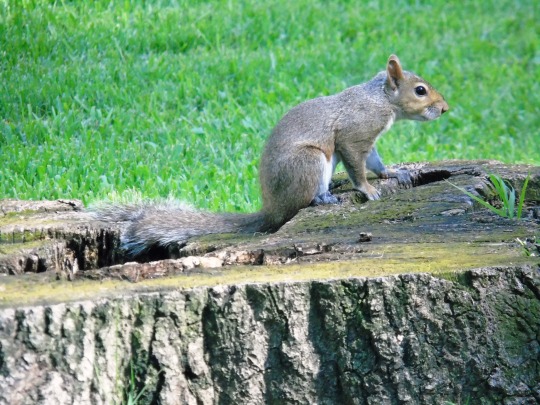

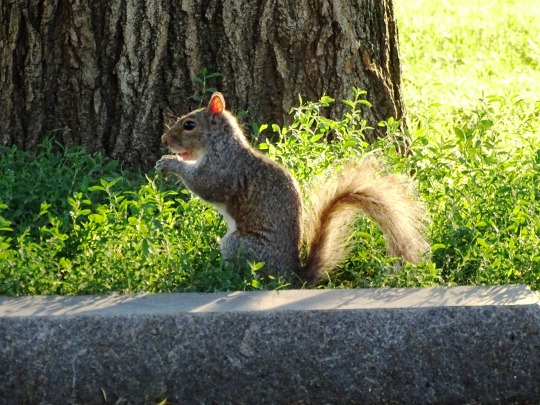

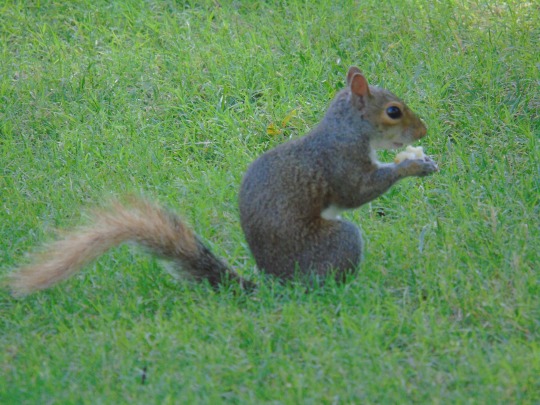


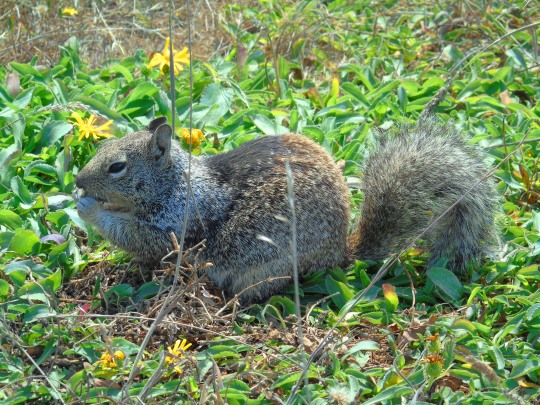

Squirrel Appreciation Day
Taking place in the dead of winter, when food for squirrels and other animals can be scarce, Squirrel Appreciation Day acknowledges the role of squirrels in nature and encourages people to put out nuts, seeds, or other food for them. It was created in 2001 by Christy Hargrove, now Christy McKeown, who at the time was a freshman at UNC-Asheville, a wildlife rehabilitator affiliated with the Western North Carolina Nature Center, and runner of the now-defunct Squirrels R Us website. She wrote that people could simply “celebrate by putting out extra food for the squirrels.”
Squirrels gather food for the winter during the fall. They plant nuts and seeds, even aerating lawns in the process. As winter drags on, they may find that the food they stored earlier is not enough, or that food that is found around them is limited. They likely could use an extra treat today. Squirrels are often known to be a nuisance when looking for food. They are aggressive at bird feeders, often tipping them over and spilling seeds, and are also known to destroy pumpkins on porches and dig up flower bulbs. Giving them food as a gift means there’s a better chance the birds can eat in peace and your flowers will come up in the spring.
Squirrels, whose name comes from skiouros, a Greek word that means “shade tail,” can be found on most places on Earth, on all continents except Antarctica. They are native to Asia, Africa, North America, South America, and Europe, and were introduced to Australia. There are over 200 species—by one count there are 268. When most people talk about squirrels, they are referring to tree squirrels, of which there are 122 species. Ground squirrels, flying squirrels, chipmunks, marmots, and prairie dogs are also part of the squirrel family. There are approximately 44 species of flying squirrels, which don’t actually fly but glide.
Two of the most common tree squirrels in North America are the western gray squirrel and the eastern gray squirrel, while the red squirrel is more prominent in Europe. However, since 1948, when the eastern gray squirrel was introduced to Europe, the number of red squirrels in Great Britain and Ireland have been decreasing. Not surprisingly, the eastern gray squirrels are viewed as being an invasive species there. The eastern gray squirrel outnumbers any other in the United States. They average just over 16 inches in length and weigh about a pound.
Squirrels range in size from a few inches to a few feet. The smallest is the African pygmy squirrel, which averages three inches, while the largest is the Indian giant squirrel, which may reach three feet in length, including the length of its tail. Squirrels live in dreys, which are nests located in trees. The breeding season in the Northern Hemisphere is long and may last from December through September. Depending on species, squirrels give birth to one or two litters of babies a year, with three to seven young in each litter. Although the vast majority of squirrels can be seen running freely, most types of squirrels are also hunted for food, and some are kept as pets. But on Squirrel Appreciation Day, we remember the importance of squirrels in nature and do our part to make sure they don’t go hungry.
How to Observe
Show your appreciation for squirrels today by leaving some food out for them. Some commonly left foods include corn and peanut butter. You could attach an ear of dried field corn onto an eye-screw and then connect it to a chain that is looped on a tree branch, or you could put some peanut butter on a pine cone. However, even though these are some popular ways squirrels are often fed, corn and peanut butter aren’t the healthiest foods for them. Some healthier foods for squirrels include fruits, vegetables, pecans, walnuts, hazelnuts, and hickory nuts. If you want to make the squirrels work for their food, you could build them an obstacle course.
There are many other ways you could show your appreciation for squirrels and learn about them. You could watch some in your yard or in a park, maybe even taking pictures of them. You could even venture to a place known for squirrel viewing. Although it’s best to experience squirrels in nature, you could also learn more about them at a natural history museum or zoo, or watch a documentary about them. Some books about squirrels you could check out include Squirrels at My Window or Squirrels: The Animal Answer Guide. Children may enjoy Those Darn Squirrels or The Adventures of Chatterer the Red Squirrel. You could also read about some notorious squirrels or get a laugh by watching videos of squirrels.
Source
#Golden-mantled Ground Squirrel#California ground squirrel#California#USA#wildlife#original photography#flora#fauna#Pacific Ocean#Memphis#Charleston#Tennessee#South Carolina#Boston#Massachusetts#travel#Squirrel Appreciation Day#summer 2022#2018#2017#West Coast#SquirrelAppreciationDay#21 January#sand#meadow#tourist attraction#animal
0 notes
Text
A beginner's guide to finding wild edible plants that won't kill you
New Post has been published on https://nexcraft.co/a-beginners-guide-to-finding-wild-edible-plants-that-wont-kill-you/
A beginner's guide to finding wild edible plants that won't kill you
You’re lost in the woods, days out from civilization, and your stash of granola has run low. How you strayed off the path—on a vision quest gone bad or while searching for your favorite bird—doesn’t matter. Soon you’ll need to find food.
But you won’t have to look far. All around your mud-spattered boots is a nutritious buffet just waiting to be plucked, cracked, and uprooted: wild edible plants.
Despite what many people believe, most vegetation in North American forests is safe to consume, according to Andrew Townesmith, a botanist and edible plant expert at the Missouri Botanical Garden. The challenge, he says, is finding plants that are both nutritious and tasty—especially when they’re uncooked.
“The majority of plants in your environment are edible,” Townesmith says. “But they may not taste good or provide much in the way of calories.” In other words, you have to be choosy if you want a good meal.
Here’s how to find greenery that pleases your tongue and satisfies your hunger—and how to avoid their potentially-dangerous cousins.
Know what not to eat
As Susanne Collins wrote in that seminal survival guide, The Hunger Games, “Plants are tricky. Many are edible, but one false mouthful and you’re dead.”
Fine, that’s a bit of an exaggeration. But there are some plants you should be sure to avoid.
Don’t be fooled by leafy plants that look like familiar edibles, says Christopher Nyerges, author of Foraging Wild Edible Plants of North America. For example, a lot of wild plants look like Italian parsley, including hemlock—the plant that, in the form of a toxic tea, killed Greek philosopher Socrates.
“You don’t have to know a single poisonous plant,” he says. “You just have to know what you’re eating.” In other words, only bite into something if you recognize exactly what it is.
Nyerges recommends that you double-check a plant’s identity through smell. For example, loads of wild onions grow in forests across the country, and they make a great food source. But, he says, “If it doesn’t smell like an onion, don’t eat it.” (Your nose can also come in handy for sniffing out poisonous plants—avoid any non-almond that smells like almonds, as that could be a sign of poisonous cyanide.)
Nibble on tree nuts
So what are the plants you should be looking out for? You might be surrounded by leaves, but as any vegetarian knows, it takes legions of lettuce to feel full. If your goal is survival, you should turn to fattier, more calorie-dense plant parts. Tree nuts, Townesmith says, are a great option—and they’re available in most North American woodlands.
If you’re east of the Great Plains, search for hickory nuts, considered one of the most calorie-dense wild plant foods. Produced by tall, deciduous hardwoods, these protein-packed snacks are hard to crack into: They have both an outer husk and an inner shell, which envelopes the brain-like nut meat. But it’s well worth your effort if you do, Townesmith says. They taste like pecans—in fact, pecans you buy at the supermarket come from a southern species of hickory—and you don’t need to cook or soak them before chowing down, Townesmith says. Just be sure the nut looks veiny, like a pecan. Like hickory nuts, poisonous buckeyes also have double-shells, but the meat looks very different—smooth and rounded.
If you’re disoriented in the forests of the American southwest, pine nuts from the pinyon pine, a scrubby evergreen of the high desert, are also a great option, Townesmith says. Found inside pine cones—who knew?—these nuts are easy to harvest and taste like buttery kernels, ready to inspire any pesto. (Pine nuts in the supermarket are typically imported, but indigenous Americans, and some chefs, have been cooking with pinyon pine nuts for years).
Even the humble acorn is edible. “They were an important food source for Native Americans,” Townesmith says. But they need to be prepared. First, use a rock to separate the nuts from the shells. And then, assuming you don’t have a pot, use a piece of clothing—such as a sock, ideally a clean one—to submerge the nut meat in a stream for a couple of days. The rushing water gets rid of some of their tannic acid, which can cause stomach issues in high concentrations, and their bitter taste. (If you soak the nuts in a pot instead, be sure to change the water a few times, Townesmith says.)
Bite into familiar berries
For dessert, pair your foraged nuts with wild berries, another great source of calories. However, finding edible fruit is a bit trickier; some varieties can make you sick. According to Townesmith, there’s no good rule of thumb for distinguishing the good from the poisonous.
So to be safe, he says, stick to berries that you recognize with absolute certainty. For example, keep an eye out for blackberries, raspberries, and other “aggregate berries”—those named for their tightly-packed clusters of fruit. They’re delicious, and bountiful in many parts of the country. In the Pacific Northwest, it’s hard not to stumble into a bramble of Himalayan blackberries, which are an encroaching variety, so you’ll be curbing an invasive species while curbing your appetite.
Other recognizable fruits, such as elderberries (small purplish-black berries that form an umbrella-shaped cluster), are also widespread. Just be sure to avoid any white berry, Townesmith says, as these tend to be toxic. Also beware of fruits that look like blueberries or cherries—they may taste scrumptious, but both have deadly doppelgangers.
Uproot aquatic plants
If you’re near a lake, river, or wetland, scan the surface for aquatic plants with leaves poking out of the water. These so-called emergent aquatics are nearly all edible, Townesmith says, and their roots are usually nutritious.
The familiar cattail, or bulrush, is a great go-to. You can easily distinguish these plants by their cigar-shaped “flower spikes,” and their roots are a good source of protein and carbs, although they’re highly fibrous, which makes them unappetizing when uncooked. (Pro-tip: If you want to toast them over a fire, then kindle your flame with the cattail’s dried-out flower spike.)
Then there’s the aquatic arrowhead. Less commonly known as “katniss”—yes, it’s the namesake of The Hunger Games heroine—you identify this plant by its large, arrowhead-shaped leaves. Its roots, nutritious underground stems called tubers, taste something like sweet potatoes, and they’re surprisingly easy to dig up.
“Stomp around in the mud, and as you loosen it up, the tubers will actually float,” Townesmith says.
When in doubt, try the universal edibility test
If you find nothing nearby that looks obviously safe to eat—or you spot an appetizing-looking plant but don’t feel sure it’s edible—you can always check it with the universal edibility test.
“It’s essentially taking small amounts of a plant, having increasing contact with it over enough time to see if any ill-effects develop,” Townesmith says.
Here’s a summary of how to perform the test, according to Backpacker. You’ll want to perform this trial separately for each part of the plant you want to eat, including the roots, leaves, and stem.
Give a strong sniff. If the plant part smells awful or like a rotting corpse, toss it out.
If not, hold the plant part to your inner elbow or wrist for a few minutes. Do you feel itching, burning, or any other negative response? If yes, don’t eat it.
If your skin feels fine, kiss the plant with your lips and then wait for 15 minutes.
As long as there’s no burning or itching, take a pea-sized bite. If the plant tastes extremely bitter or soapy, spit it out immediately—but remember, most plants are gross, so don’t expect the peppery flavor of basil. Even if the taste is bearable, hold the bite in your mouth for another 15 minutes.
Finally, wait for at least a few hours. At this point, if you’re not feeling sick or dead on the forest floor, then that part of the plant—and that part only—is probably safe to eat.
Though these tips may make the thought of getting lost in the woods less horrifying, they just scratch the surface of wild foraging. To level up, Nyerges says, learn some basic botany. This can teach you things like how to identify edible families like mustard by their floral characteristics. (“In any given area, there are about 50 different varieties of mustards,” Nyerges says.)
So read a book. Or take a class (Nyerges, co-founder of the School for Self Reliance, has been teaching foraging workshops in California for more than 40 years). If you do, then the next time you go wandering in the woods, you may be perfectly content to stay there.
Written By Benji Jones
0 notes
Photo
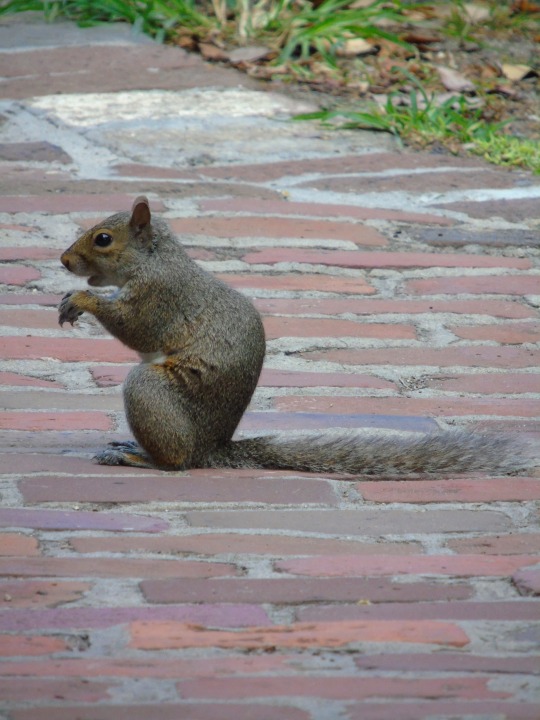
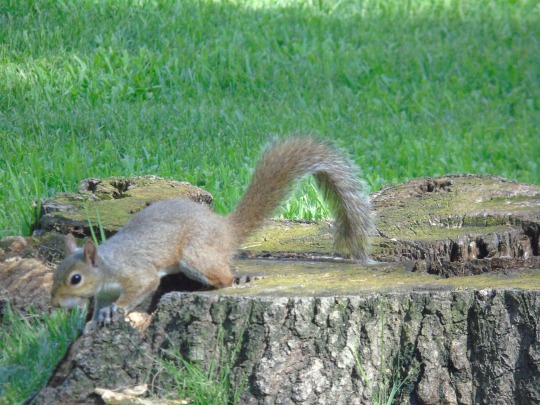
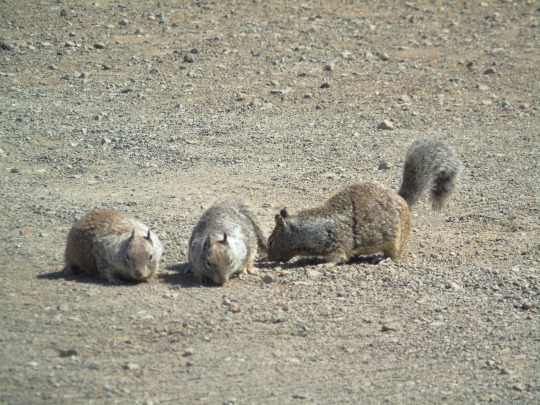
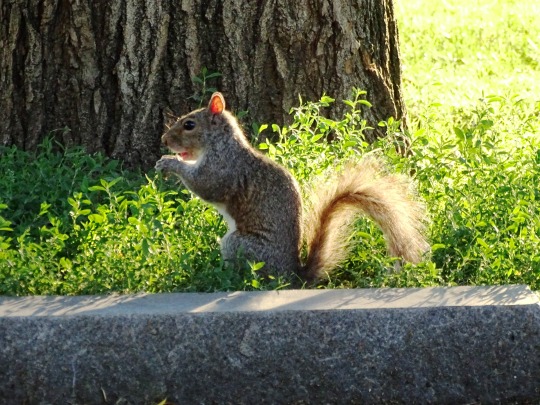
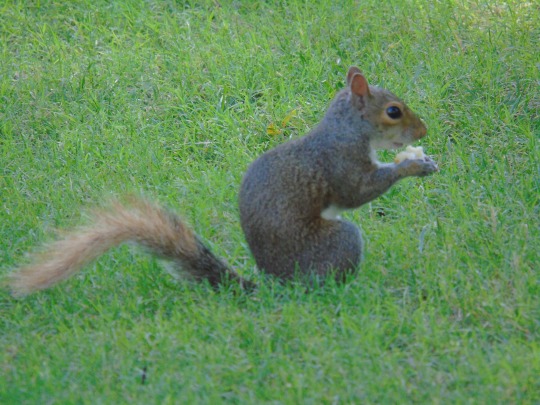

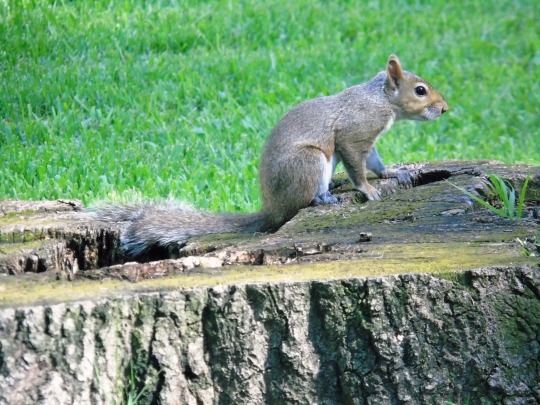
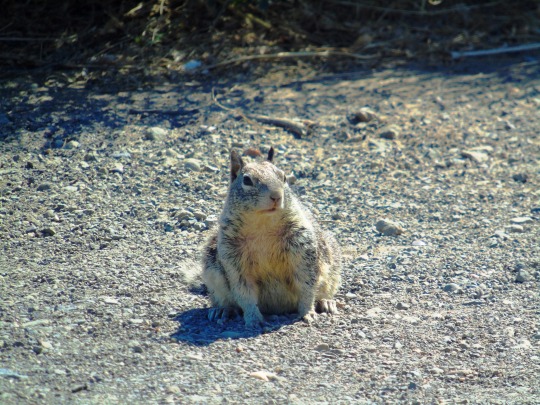

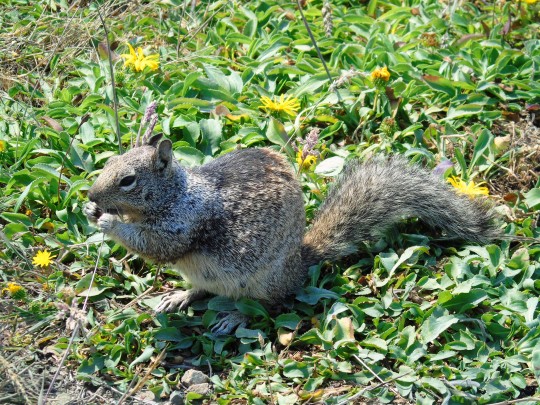
Squirrel Appreciation Day
Taking place in the dead of winter, when food for squirrels and other animals can be scarce, Squirrel Appreciation Day acknowledges the role of squirrels in nature and encourages people to put out nuts, seeds, or other food for them. It was created in 2001 by Christy Hargrove, now Christy McKeown, who at the time was a freshman at UNC-Asheville, a wildlife rehabilitator affiliated with the Western North Carolina Nature Center, and runner of the now-defunct Squirrels R Us website. She wrote that people could simply "celebrate by putting out extra food for the squirrels."
Squirrels gather food for the winter during the fall. They plant nuts and seeds, even aerating lawns in the process. As winter drags on, they may find that the food they stored earlier is not enough, or that food that is found around them is limited. They likely could use an extra treat today. Squirrels are often known to be a nuisance when looking for food. They are aggressive at bird feeders, often tipping them over and spilling seeds, and are also known to destroy pumpkins on porches and dig up flower bulbs. Giving them food as a gift means there's a better chance the birds can eat in peace and your flowers will come up in the spring.
Squirrels, whose name comes from skiouros, a Greek word that means "shade tail," can be found on most places on Earth, on all continents except Antarctica. They are native to Asia, Africa, North America, South America, and Europe, and were introduced to Australia. There are over 200 species—by one count there are 268. When most people talk about squirrels, they are referring to tree squirrels, of which there are 122 species. Ground squirrels, flying squirrels, chipmunks, marmots, and prairie dogs are also part of the squirrel family. There are approximately 44 species of flying squirrels, which don't actually fly but glide.
Two of the most common tree squirrels in North America are the western gray squirrel and the eastern gray squirrel, while the red squirrel is more prominent in Europe. However, since 1948, when the eastern gray squirrel was introduced to Europe, the number of red squirrels in Great Britain and Ireland have been decreasing. Not surprisingly, the eastern gray squirrels are viewed as being an invasive species there. The eastern gray squirrel outnumbers any other in the United States. They average just over 16 inches in length and weigh about a pound.
Squirrels range in size from a few inches to a few feet. The smallest is the African pygmy squirrel, which averages three inches, while the largest is the Indian giant squirrel, which may reach three feet in length, including the length of its tail. Squirrels live in dreys, which are nests located in trees. The breeding season in the Northern Hemisphere is long and may last from December through September. Depending on species, squirrels give birth to one or two litters of babies a year, with three to seven young in each litter. Although the vast majority of squirrels can be seen running freely, most types of squirrels are also hunted for food, and some are kept as pets. But on Squirrel Appreciation Day, we remember the importance of squirrels in nature and do our part to make sure they don't go hungry.
How to Observe
Show your appreciation for squirrels today by leaving some food out for them. Some commonly left foods include corn and peanut butter. You could attach an ear of dried field corn onto an eye-screw and then connect it to a chain that is looped on a tree branch, or you could put some peanut butter on a pine cone. However, even though these are some popular ways squirrels are often fed, corn and peanut butter aren't the healthiest foods for them. Some healthier foods for squirrels include fruits, vegetables, pecans, walnuts, hazelnuts, and hickory nuts. If you want to make the squirrels work for their food, you could build them an obstacle course.
There are many other ways you could show your appreciation for squirrels and learn about them. You could watch some in your yard or in a park, maybe even taking pictures of them. You could even venture to a place known for squirrel viewing. Although it's best to experience squirrels in nature, you could also learn more about them at a natural history museum or zoo, or watch a documentary about them. Some books about squirrels you could check out include Squirrels at My Window or Squirrels: The Animal Answer Guide. Children may enjoy Those Darn Squirrels or The Adventures of Chatterer the Red Squirrel. You could also read about some notorious squirrels or get a laugh by watching videos of squirrels.
Source
#Squirrel Appreciation Day#SquirrelAppreciationDay#21 January#animal#USA#wildlife#Charleston#Memphis#Vista Point San Simeon#Boston#summer vacation#national day#eating#original photography#Tennessee#Point Cabrillo Light Station State Historic Park#California#Massachusetts#South Carolina#grass#flora
1 note
·
View note
Photo
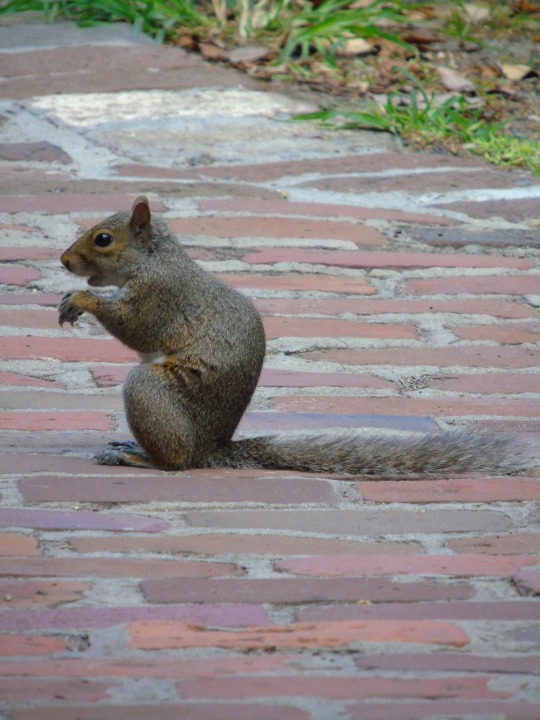
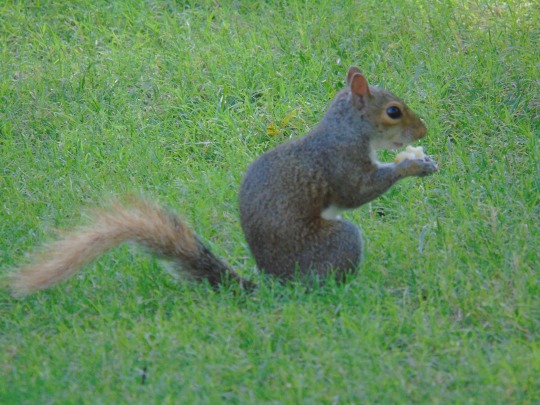





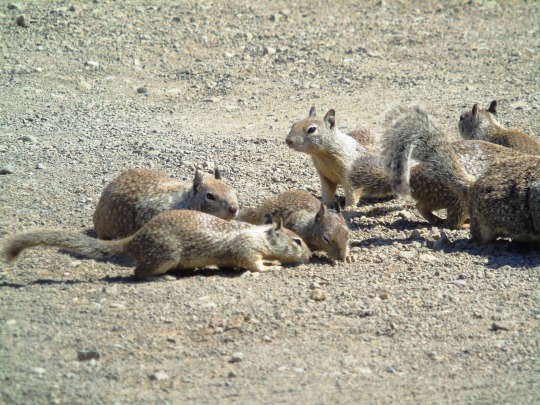


Squirrel Appreciation Day
Taking place in the dead of winter, when food for squirrels and other animals can be scarce, Squirrel Appreciation Day acknowledges the role of squirrels in nature and encourages people to put out nuts, seeds, or other food for them. It was created in 2001 by Christy Hargrove, now Christy McKeown, who at the time was a freshman at UNC-Asheville, a wildlife rehabilitator affiliated with the Western North Carolina Nature Center, and runner of the now-defunct Squirrels R Us website. She wrote that people could simply “celebrate by putting out extra food for the squirrels.”
Squirrels gather food for the winter during the fall. They plant nuts and seeds, even aerating lawns in the process. As winter drags on, they may find that the food they stored earlier is not enough, or that food that is found around them is limited. They likely could use an extra treat today. Squirrels are often known to be a nuisance when looking for food. They are aggressive at bird feeders, often tipping them over and spilling seeds, and are also known to destroy pumpkins on porches and dig up flower bulbs. Giving them food as a gift means there’s a better chance the birds can eat in peace and your flowers will come up in the spring.
Squirrels, whose name comes from skiouros, a Greek word that means “shade tail,” can be found on most places on Earth, on all continents except Antarctica. They are native to Asia, Africa, North America, South America, and Europe, and were introduced to Australia. There are over 200 species—by one count there are 268. When most people talk about squirrels, they are referring to tree squirrels, of which there are 122 species. Ground squirrels, flying squirrels, chipmunks, marmots, and prairie dogs are also part of the squirrel family. There are approximately 44 species of flying squirrels, which don’t actually fly but glide.
Two of the most common tree squirrels in North America are the western gray squirrel and the eastern gray squirrel, while the red squirrel is more prominent in Europe. However, since 1948, when the eastern gray squirrel was introduced to Europe, the number of red squirrels in Great Britain and Ireland have been decreasing. Not surprisingly, the eastern gray squirrels are viewed as being an invasive species there. The eastern gray squirrel outnumbers any other in the United States. They average just over 16 inches in length and weigh about a pound.
Squirrels range in size from a few inches to a few feet. The smallest is the African pygmy squirrel, which averages three inches, while the largest is the Indian giant squirrel, which may reach three feet in length, including the length of its tail. Squirrels live in dreys, which are nests located in trees. The breeding season in the Northern Hemisphere is long and may last from December through September. Depending on species, squirrels give birth to one or two litters of babies a year, with three to seven young in each litter. Although the vast majority of squirrels can be seen running freely, most types of squirrels are also hunted for food, and some are kept as pets. But on Squirrel Appreciation Day, we remember the importance of squirrels in nature and do our part to make sure they don’t go hungry.
How to Observe
Show your appreciation for squirrels today by leaving some food out for them. Some commonly left foods include corn and peanut butter. You could attach an ear of dried field corn onto an eye-screw and then connect it to a chain that is looped on a tree branch, or you could put some peanut butter on a pine cone. However, even though these are some popular ways squirrels are often fed, corn and peanut butter aren’t the healthiest foods for them. Some healthier foods for squirrels include fruits, vegetables, pecans, walnuts, hazelnuts, and hickory nuts. If you want to make the squirrels work for their food, you could build them an obstacle course.
There are many other ways you could show your appreciation for squirrels and learn about them. You could watch some in your yard or in a park, maybe even taking pictures of them. You could even venture to a place known for squirrel viewing. Although it’s best to experience squirrels in nature, you could also learn more about them at a natural history museum or zoo, or watch a documentary about them. Some books about squirrels you could check out include Squirrels at My Window or Squirrels: The Animal Answer Guide. Children may enjoy Those Darn Squirrels or The Adventures of Chatterer the Red Squirrel. You could also read about some notorious squirrels or get a laugh by watching videos of squirrels.
Source
#Charleston#South Carolina#Memphis#Tennessee#animal#wildlife#USA#flora#fauna#original photography#vacation#travel#21 January#eating#Squirrel Appreciation Day#SquirrelAppreciationDay#Boston#tourism#California#summer vacation#tree trunk#grass#national day#squirrel
1 note
·
View note